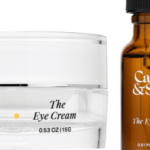From Nature to Bottle: How Perfumes Are Made In the present day

Have you ever ever smelled one thing and immediately remembered a second? Possibly it reminded you of an individual you knew. Or a spot you’d nearly forgotten. Only a hint of scent, and abruptly all of it comes again. That’s the quiet energy of fragrance. However how does that energy get right into a bottle?
Most individuals don’t give it some thought. We spray it on earlier than heading out and transfer on with our day. However there’s an entire course of behind it — one which begins in nature, passes by means of labs, and finally ends up as one thing deeply private. That is how perfumes are made right now — step-by-step, from uncooked substances to the ultimate scent that stays with you.
It Begins with Issues That Smells Good

Earlier than it turns into one thing you spray in your wrist, fragrance begins out as… effectively, uncooked supplies. Largely vegetation. Nothing fancy at first. Simply petals, bark, roots, leaves, spices.
Take rose petals. They’re a basic. Often picked early within the morning, once they odor the strongest. Then there’s jasmine — one other favourite — but it surely’s delicate. The sort that bruises if you happen to’re not cautious. So, it’s picked gently by hand. Gradual work, but it surely pays off.
Citrus oils are fairly frequent too. Lemon, bergamot, orange. The great smells lives within the peel. They press it — chilly, like juicing — and the oils come out contemporary and sharp.
Wooden’s one other layer. Sandalwood, cedar — they provide that heat, clean base that lingers. And resins? Frankincense and myrrh have been round without end. They nonetheless present up right now as a result of they anchor a scent. Make it deeper. Extra stable.
However right here’s the factor about utilizing pure supplies — they’re unpredictable. Climate, soil, pests… all of it modifications the standard. Some years, you get superb crops. Different years? Not a lot.
That’s when the lab steps in. To not substitute nature, however to fill the gaps it typically leaves behind.
Why Artificial Notes Are a Huge Deal

Let’s get one factor straight — simply because one thing’s made in a lab doesn’t imply it’s pretend or unhealthy. That concept’s form of outdated.
Some scents can’t even be pulled from nature. Lilies are an excellent instance. Odor superb, proper? However attempt to get oil out of them and… nothing. Doesn’t work. So, scientists recreate that odor from scratch — molecule by molecule.
It’s fairly technical, however the finish end result? Smells nearly precisely like the true flower. In some circumstances, even higher. You’ll be able to clean out the tough edges, make it last more, or alter the elements that don’t sit effectively with different substances.
After which there are scents that don’t exist in nature in any respect. Like that delicate “clear pores and skin” form of odor. Or metallic ones. These are lab-born. And actually, they’ve added a lot to fashionable perfumes.
One other huge cause synthetics matter? They’re constant. Nature’s unpredictable — climate, soil, even the time of harvest can mess with the scent. However lab-made notes? They don’t change. Plus, they’re extra sustainable. No uncommon vegetation. No animal hurt. Simply sensible chemistry.
Ultimately, synthetics give perfumers extra room to create — whereas additionally being sensible and extra planet-friendly.
Getting the Odor Out
So, let’s say you’ve bought a rose. Or perhaps a lemon. Or perhaps a sticky chunk of tree resin. How do you truly get the scent out of it?
Effectively, there’s multiple strategy to do it. And the tactic will depend on what you’re working with.
Steam Distillation
This one’s been round without end. You throw the plant materials right into a nonetheless, add water, then warmth all of it up. Because the water boils, steam carries the scent up and away. Then it cools down and separates into two elements — important oil and floral water. It’s easy. Traditional. Nonetheless used right now for lots of issues.
Chilly Urgent
Used principally for citrus. You recognize that blast of odor if you peel an orange? That’s the place the magic is — within the pores and skin. They press the peel, form of like juicing it, however solely the oil comes out. No warmth concerned, which retains the scent contemporary and sharp.
Now, for flowers like jasmine or tuberose, steam is a bit an excessive amount of. It wrecks the fragile scent. So as a substitute, perfumers use a solvent — often alcohol or hexane — to dissolve the odor out of the petals. What’s left is a thick, waxy factor known as a “concrete”. They clear that as much as get the “absolute,” which is mainly probably the most concentrated and pure model of that scent.
This one’s high-tech and expensive. It makes use of carbon dioxide beneath strain to tug the oils out — no warmth, no harsh chemical compounds. The end result? Tremendous clear, sturdy, and really true to the unique odor.
Every methodology has its perks. All of it comes right down to the plant. Some maintain up beneath warmth. Others collapse the second it will get heat.
The Mix: The place Magic Occurs

As soon as all of the substances are prepared, that’s when issues get attention-grabbing. That is the half the place the magic actually occurs — mixing.
Perfumers — typically known as “noses” within the business — begin mixing totally different oils and artificial notes. They’re not simply throwing issues collectively and hoping for the perfect. It’s a talent. Like portray, however with scent.
Each fragrance is in-built layers. These are known as notes, and every one performs a unique function.
- Prime notes are what you odor first. Gentle, contemporary, often citrusy or natural. They come out, then disappear inside minutes.
- Coronary heart notes come subsequent. These make up the primary physique of the perfume. Suppose florals, spices — smells that lasts a couple of hours.
- Base notes are those that stick round. Musky, woody, wealthy. They don’t shout, however they’re the half you bear in mind later within the day.
You’ll be able to consider it form of like music. One loud instrument ruins the entire thing. However when every part is in sync, it’s lovely. That’s what an excellent perfumer does — they discover stability between all of the items.
After mixing, the fragrance isn’t prepared simply but. It wants time to settle. So it’s blended with alcohol (or typically oil) after which left alone. Could possibly be weeks. Typically longer.
Why? As a result of perfumes, like wine, have to age. It helps the notes come collectively extra easily. The scent will get deeper. Softer across the edges. It turns into entire.
It Goes By a Lot Earlier than You Odor It
Earlier than any fragrance finally ends up on a retailer shelf, it goes by means of numerous testing. Like, quite a bit.
Does it sit effectively in your pores and skin?
Does the scent final greater than an hour or two?
Will it nonetheless odor good months down the road, or will it flip bizarre?
If one thing feels off — even barely — they return and tweak it. Typically they scrap the entire batch and begin once more. It’s trial, error, repeat.
And the bottle? That’s not simply ornament.
Gentle and air can mess with fragrance. Change the scent. So manufacturers often go for thick glass, darker colours, or tight lids to maintain every part sealed and secure.
That stated, let’s be trustworthy. We do care what the bottle seems like. scent is nice, however a gorgeous bottle? That’s what makes you wish to present it off in your dresser.
Fragrance Tendencies Are Getting Daring

Again within the day, it was all fairly divided. Males often went for heavy, woody scents. Ladies caught to florals and candy nectars.
That’s not the case anymore.
As of late, it’s broad open. A man can put on vanilla. A lady can rock one thing smoky or leathery. A lot of the newer perfumes don’t even trouble with “for males” or “for ladies.” They’re simply made for whoever likes the odor.
One huge shift? Pores and skin scents. Tremendous delicate. Virtually invisible. They don’t scream “fragrance” — they simply make you odor… such as you, however cleaner. Hotter. Individuals can’t get sufficient of them.
And the substances? They’re getting daring.
Some scents odor like previous books and wooden flooring. Others remind you of tomato stems, salt, even rain on pavement. It’s bizarre — however in a enjoyable method.
New releases, like Jean Paul Gaultier Le Beau Paradise Backyard, are mixing that old-school appeal with stunning twists. So it feels acquainted however nonetheless new. Like one thing you didn’t know you wanted till you tried it.
One Bizarre Reality: It Gained’t Odor the Similar on You
Have you ever ever purchased a fragrance that smelled unbelievable on another person, however form of… flat on you?
Yeah, that occurs. And it’s not your creativeness.
Fragrance mixes along with your pores and skin, and everybody’s pores and skin is totally different. Issues like your pH degree, what you eat, how hydrated you’re — all of them play a task in how a scent exhibits up on you.
So right here’s a tip: don’t depend on these little paper strips on the retailer. They provide you a tough concept, certain, but it surely’s not the complete image.
Spray it in your wrist. Let it sit. Go run some errands. Come again to it in an hour or two. That’s if you’ll actually know if it really works for you — or not.
Closing Ideas
Fragrance isn’t nearly smelling good. It’s about reminiscence. Id. A tiny bottle that claims one thing with out phrases.
However making that bottle? It takes farmers, scientists, artists, machines, noses, and time.
Now you realize the method — from nature to bottle. From petals to alcohol. From a thousand tweaks in a lab to that last spritz earlier than an evening out.
So subsequent time you apply your favourite scent, take a second. Breathe it in slowly. Really feel the story behind it.
And perhaps strive one thing new. Your subsequent signature scent may be only a pattern away.
For extra on the most recent in luxurious magnificence and skincare reads, click on right here.








